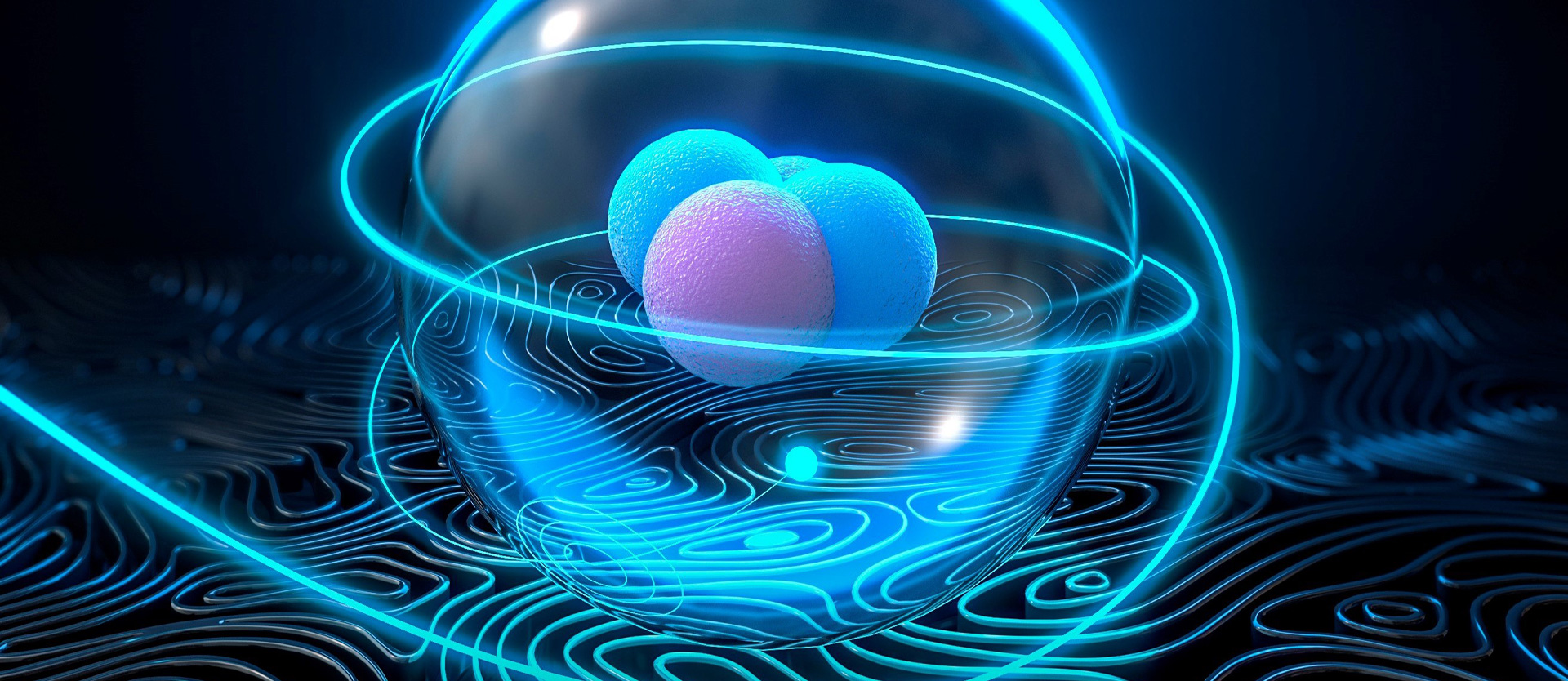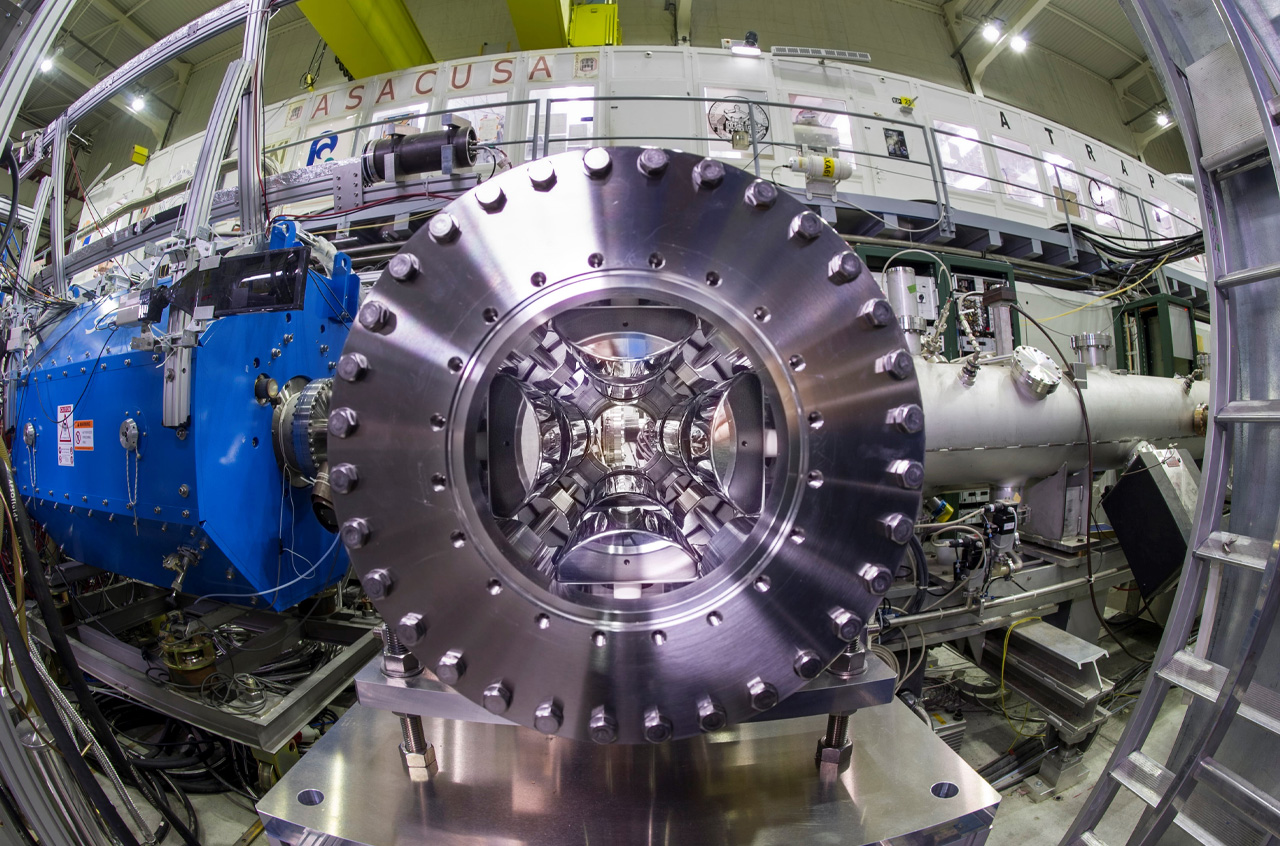
Surprisingly slim line at 2.2 Kelvin

Photograph of the quadrupole triplet lens used to focus the antiproton beam into a helium target. Photo: CERN
n a series of experiments, the scientists took a spectroscopic look at the antiprotonic helium atoms at different temperatures. To do this, they irradiated the liquid helium with light from a titanium-sapphire laser, which excited two characteristic resonances of the antiprotonic atoms at two different frequencies. The surprising discovery: "If the temperature dropped below the critical temperature of 2.2 Kelvin – 2.2 degrees Celsius above absolute zero - at which helium enters a superfluid state, the shape of the spectral lines suddenly changed," reports Anna Sótér, who was the principal PhD student of the MPQ team in this project and recently promoted as assistant professor of ETH Zürich. "The lines that were very broad at higher temperatures became narrow." The superfluid phase is a special liquid state that is characterised, among other things, by the absence of internal friction. The quantum physical phenomenon is typical of helium at extremely low temperatures. "How the striking change in the spectral lines of the antiproton comes about in such an environment and what happens physically in the process is something we don't know yet," says Hori. "We were surprised by it ourselves."
But the possibilities offered by the effect are far-reaching. This is because the narrowing of the resonance lines is so drastic that when excited with light, the so-called hyperfine structure can be resolved, the scientists report in a publication in “Nature”. The hyperfine structure is a consequence of the mutual influence of the electron and the antiproton in the atom. This indicates that researchers could create in superfluid helium other hybrid helium atoms with different antimatter and exotic particles to study in detail their response to laser light and measure their masses. An example of this are pionic helium atoms that were recently studied by laser spectroscopy at the 590 megaelectron volt cyclotron facility of Paul Scherrer Institute in Villingen, Switzerland.
Searching for particles in cosmic radiation
Zudem könnten die scharfen Spektrallinien hilfreich sein beim Nachweis von Antiprotonen und Antideuteronen in der kosmischen Strahlung. Ihnen sind ForscherInnen bereits seit Jahren auf der Spur, etwa mit Experimenten an Bord der Internationalen Raumstation ISS. Demnächst werden Wissenschaftler auch einen Testballon über der Antarktis starten – mit einem Instrument an Bord, das Antiprotonen und Antideuteronen aufspüren kann, die möglicherweise in sehr großen Höhen in der Atmosphäre existieren. Masaki Hori spekuliert: „Detektoren mit superfluidem Helium könnten solche Versuche unterstützen und wären geeignet, Antiteilchen aus dem All einzufangen und zu analysieren.“ Das würde womöglich zur Lösung eines anderen großen Rätsels beitragen: der Frage nach dem Wesen der Dunklen Materie – einer ominösen und bislang unbekannten Materieform, die nicht sichtbar ist, aber offenbar einen Großteil der Masse im Universum ausmacht. In einigen Theorien wird angenommen, dass bei der Wechselwirkung Dunkler Materie im Halo unserer Galaxie Antiteilchen entstehen, die dann zur Erde gelangen können. Ausgerechnet Antimaterie könnte so Licht in dieses Dunkel bringen.
Original publication:
Sótér, A., Aghai-Khozani, H., Barna, D. et al.
High-resolution laser resonances of antiprotonic helium in superfluid 4He
Nature (2022)









